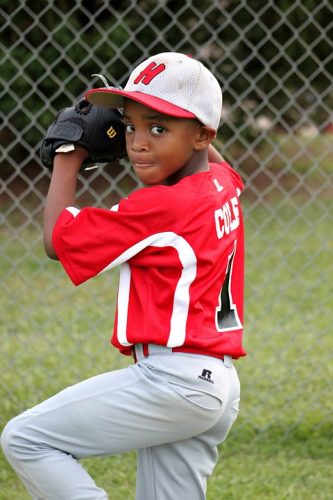
Depth of Field
But before we dive into the settings, you first need to understand depth of field. Depth of field is a range of sharpness. A shallow depth of field refers to a small range of acceptable sharpness, while a deep depth of field refers to a large range of acceptable sharpness in an image. When standing at the same distance away from your scene, there are three ways to alter the depth of field: changing your aperture setting, changing the focal length on your camera, and changing the focus distance. The following settings will help you when adjusting your depth of field. The ISO setting is a way to change the sensitivity of your camera’s sensor to light. ISO is the first setting you should set and you should always be aware of where it is set. A lower ISO number means that the camera sensor won’t be as sensitive to light but the quality of the image will be the best of the camera’s ability. Low ISO images will have little to no digital noise. The best times to shoot with a low ISO are in strong daylight, when using a tripod, or when using studio lights.
A high ISO number means that the camera sensor will read more of the light. Higher ISO’s are generally used when the light is not ideal and you do not have a tripod. Once your ISO is set, you will then have to figure out whether you want to shoot in Aperture Priority or Shutter Priority mode.
Av (Aperture Priority Mode)The aperture is the hole in the lens that allows light to enter the camera. In this mode, you set what aperture you would like to use and the camera sets the shutter speed based on your aperture. This is perfect for shooting outdoors when you have enough light to work with. Set the aperture based on how much depth of field/sharpness you need in your shot. The term f-stop is a number that refers to the size of the aperture opening. Using Aperture Priority Mode will allow you to alter your f-stop and the camera will then use its internal light meter to choose a corresponding shutter speed to expose the scene correctly. A smaller aperture, which refers to a larger number, such as f/16 will allow for a deeper depth of field in a scene but will allow less light to enter the camera. If your subject is a person in the foreground but you need to show context of their environment, you need the background to be as sharp as it can get. You’ll want to choose aperture f11 or higher. If you want to draw interest to the foreground, go for aperture f2.8.
Shutter Priority Mode
When you press the shutter button on your camera and take a picture, the aperture blades take a specific amount of time to close. This amount of time is known as your shutter speed. Using the Shutter Priority mode will allow you to set your ideal shutter speed, while the camera will pick a corresponding aperture to expose the scene correctly. A faster shutter speed, a smaller fraction, such as 1/320th of a second, will allow less light to reach the sensor but will freeze your subject’s motion or offset the camera shake when your camera is handheld. A slower shutter speed, a larger fraction, such as 1/8th of a second, will allow more light to reach your sensor and, if slow enough, will create a noticeable blur in an image.

Manual Mode
Manual Mode allows you to set the shutter, aperture, and ISO settings without the camera’s interference. This setting is ideal when you use a tripod and have the time to fine tune the exposure. It’s also good in situations where the lighting is consistent, such as on overcast days, indoors, or when using strobe lights or flashes.
Auto Mode
This is basically autopilot for your camera. When set on Auto Mode, everything will be set for you by the camera. There is nothing wrong with using this mode, especially until you get comfortable with the different manual modes.
Example of Photo Taken in Auto Mode
You don’t need to be an expert photographer to get the most out of your camera from Beachcamera.com. However, these settings will help you when you come across photo opportunities and you are unsure what to do.








































